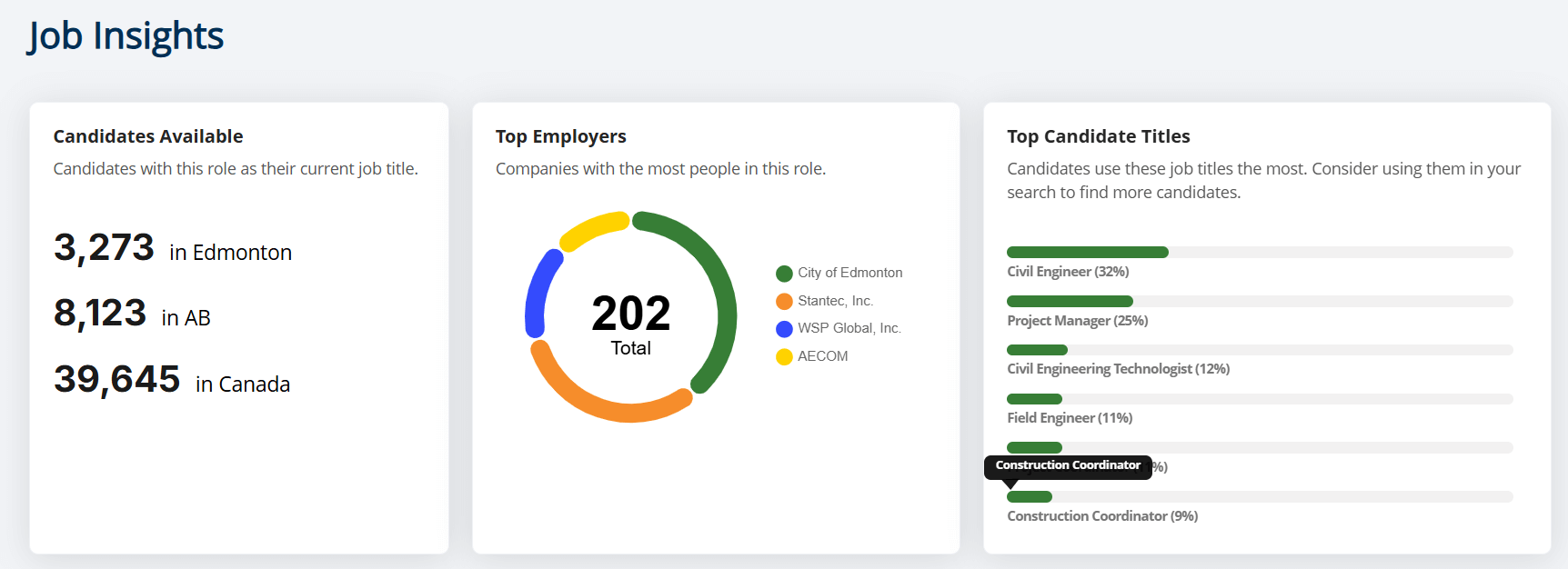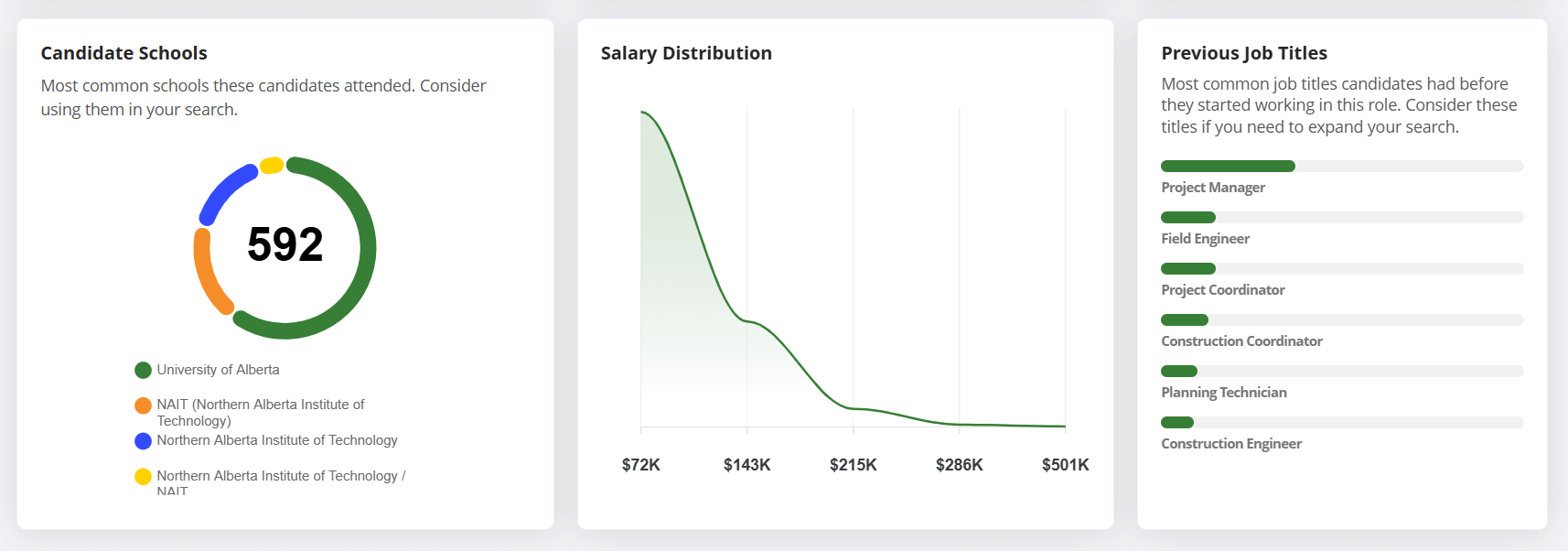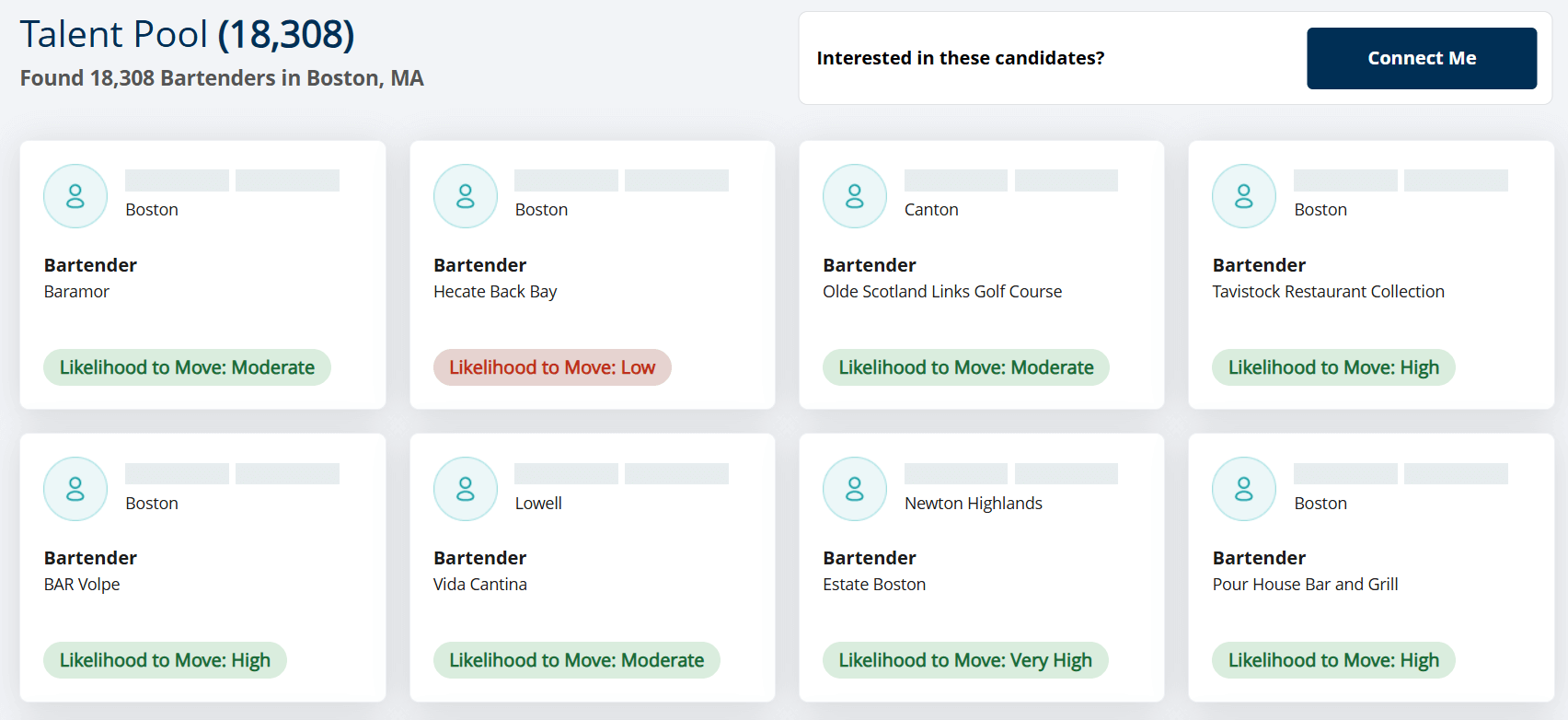Like anything else, data isn’t good or bad on its own—it depends on how you use it.
And whether you’re using data to decide what to eat for dinner (current trends indicate tacos are optimal) or who to hire for your IT team, it’s critical that you understand and apply data properly to get the best outcome.
Most hiring data platforms will give you similar data points (salary ranges, ratios of job seekers and job openings, top employers, etc.)–but that doesn’t mean every platform is equal.
For example, Indeed Hiring Insights is a common one that has been around for years—it has great data based on Indeed’s extensive resume system, but the categories and visualizations are a bit limited.
So: if there are advantages and disadvantages to every tool, what should you prioritize? It’ll depend on your needs, but generally speaking, you need a platform that has:
- Accurate data
- Useable data
- Organized data
This is where our platform, Raise Talent Intelligence (RTI), shines. It pairs accuracy with a custom interface, built with HR users in mind. It can help you understand the job market you’re hiring in—whether that’s an Engineer in Edmonton or a Bartender in Boston.

Thinking about using some other platforms too? Here’s a bit more on what you should be looking for in a Hiring Intelligence Platform.
1. Accurate data
This one’s obvious. If you don’t have good data you’re not going to make very good hiring decisions.
What’s less obvious is: how do you know that the data you’re being provided is accurate?
Getting data from trustworthy sources is key, as is the size of datasets. The larger the dataset, the more accurate the numbers will be.
The best talent platforms will use accurate data based on current information—like Raise Talent Intelligence, which draws from Revelio’s global workforce database which tracks over 2 billion job postings and is updated every week.

2. Useable data
But even accurate data, on its own, isn’t enough—you need data that is going to be applicable to your situation and capable of helping you make a good decision.
On its own, data is very abstract. For example, if I gave you salary info for every .NET developer hired in the last 10 years, would that help you set a salary range?
Well…..yes and no.
It would probably depend on whether demand for those roles has changed over the last few years, or if we are talking about an intermediate or senior developer, etc.
So when you’re using hiring data, make sure you’re asking the right questions, and pay attention to the details. Sometimes a platform will output exactly what you’re looking for, but other times you’ll have to take the info with a grain of salt.
That’s why Raise Talent Intelligence features real candidates—in addition to aggregate data on salary, posting volumes, and education, you can take a look at real people looking for real jobs.

3. Organized data
In many ways, useable data and organized data are the same thing—which is to say if your data isn’t organized it almost certainly won’t be useful.
But not all organization is equal:
- Is the information easy to parse? Does every section have clear headings and use appropriate visuals, or is everything bar graphs?
- Can you navigate sections easily? Does it clearly mark and segment different kinds of information?
- Is there a logical flow to information, or are different sections put together without any reason?
Some platforms focus more on the data than how people see it—if your data platform is difficult to navigate or overloads you with info, try looking for something different!
Putting it all together
Even if data is the new oil, it’s still just one tool in the recruitment arsenal. If you want to have data that helps, rather than hinders your next hire, make sure you use a powerful and trusted like Raise Talent Intelligence (which you can try right now here).

